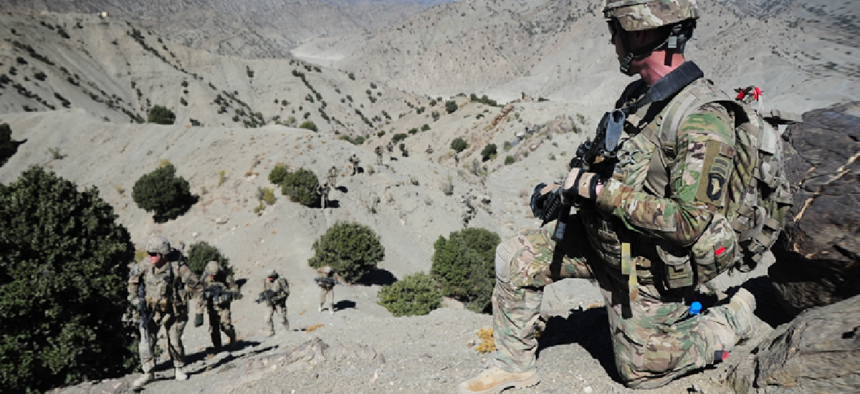
Air Force Lab wants wearables to monitor warfighter health
The Air Force Research Lab teamed with a biosensor startup to develop implanted sensors that would allow medical personnel to continuously monitor troops for indications of a potential illness.
Wearable sensors hold the promise of protecting warfighters, allowing medical personnel to continuously monitor troops for low oxygen and glucose levels or elevated temperatures that signal a potential casualty.
Already, easy-to-use sensors are widely available. From fabrics that can detect chemical or infectious agents to skin patches and injectable sensors, the market for military wearable sensors market in North America is expected to grow 20% between 2018 to 2023, according to a recent market research study.
Monitoring and recording physiological data on warfighters in the field can provide an added degree of safety and help commanders define mission parameters. Such monitoring devices, however, must be lightweight, compact, unobtrusive and user friendly.
The military has been experimenting with non-invasive sensors for several years, but researchers understood that implanted sensors could deliver more accurate data. Unfortunately, when a foreign object like a sensor is placed under the skin, the human body protects itself by trying to expel or wall off the implant, limiting the usefulness of invasive sensors.
But now, the Air Force Research Lab is working with Profusa, a biosensor startup, whose two-part monitoring system gets around the body's response to foreign objects and offers a path to continuous biomonitoring.
To track changes in tissue oxygen and glucose levels, Profusa has developed tiny flexible hydrogel sensors that have the consistency of a soft contact lens and are the size of a grain of rice. Unlike many injected electronics that cause the body to build up scar tissue around a foreign object and interfere with data collection, the biosensor's composition allows it to integrate into the surrounding tissue. It is built on a porous framework that encourages capillary and cellular growth from surrounding tissue.
The hydrogel uses light-emitting fluorescent molecules to continuously signal the presence and concentration of particular body chemicals, such as oxygen or glucose. A lightweight optical reader worn on the skin reads the fluorescent signals from the embedded sensors, resulting in data that can be sent to a smartphone or other collection device, lab officials said.
The Profusa biosensor is "engineered with specific molecules that respond to specific wavelengths of light," AFRL Scientist and Program Manager Jeremy Ward said. "Depending on the composition of those molecules, their optical response changes based on the local concentration of oxygen, glucose, or other analytes in the body.”
To mature the technology for military applications, AFRL and Profusa worked with NetFlex, a consortium of government, industry and universities working to advance manufacturing of flexible hybrid electronics. The partners reduced the size and improved the flexibility of the sensor patch worn on the skin so that it could undergo testing for military applications.
Research and testing of biosensors is being conducted across the military. Last summer, the Army Research Institute of Environmental Medicine strapped wearable sensors on 2,000 soldiers in Ranger training at Fort Benning, Ga., to learn more about heat-related casualties, which have been climbing over the past few years. Sensors in the chest harness soldiers wear monitor their core and skin temperatures and heart rates as they train in the heat and humidity. Researchers hope the data from the sensors will help them learn why some soldiers are more susceptible to heat injury than others, identify those individuals earlier and mitigate casualties.
NEXT STORY: USAF seeks safe space for AI development
